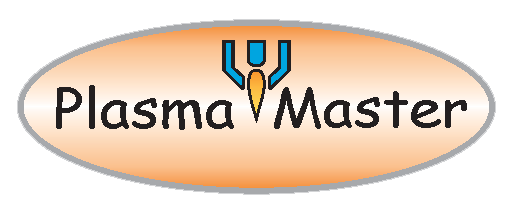
Company «Plasma-Master Ltd.» is on the way of innovation development
The Paton Welding Journal №7 (2015).
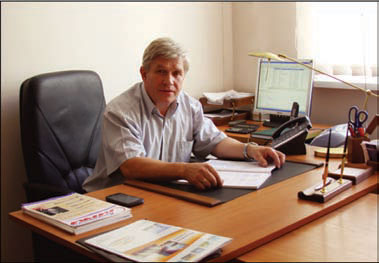
The R&P company «Plasma-Master Ltd.» was founded in 1992 by the specialists in the field of technology of welding and surfacing. It has a research and production activity and is specialized on fulfillment of complicated engineering works. The company has several production facilities equipped with advanced welding, surfacing and machining equipment, which in combination with a gained experience of the company specialists allows solving the complicated technical problems. The company staff amounts 40 associates, mainly of research and engineering profile. The company is cooperating with research institutes of Ukraine, first of all with the E.O. Paton Electric Welding Institute of the NAS of Ukraine. The Editorial Board initiated the interview with Dr. Som A.I., the director of «Plasma-Master Ltd.» company, believing that acquaintance with its effective activity will represent interest to the journal readers.
Dr. Som, the company «Plasma-Master Ltd.» is the recognized leader in Ukraine in the field of plasma-powder surfacing (PPS). How was the company founded? What problems were encountered at the initial stages of its foundation?
As you remember, in the early 1990s the situation in the country was complicated and ambiguous. The disintegration of the Soviet Union, rupture of economic relations and galloping inflation made many people think over: what is next to do? How shall we do? Our activity at the PWI, where I was working by then, had vague prospects. Later, me with a group of young specialists working along with me in the PWI, decided to organize our own company, which was supposed to be more survivable and effective in a rough sea of market relations. The company under the name «Plasma-Master Ltd.» was registered in April, 1992. In the name of the company the word «plasma» implies a source of heating and we were going to work with using the PPS process. At the beginning it was difficult because of the lack of finances, facilities and equipment. But the knowledge and experience gained in the PWI, as well as foreign relations and sponsor assistance, allowed us to get used to the current situation very quickly. And in 1993, we had already delivered the installation for PPS of our own design and separately two new plasmatrons of different design to Germany. This success gave us confidence in our work. Later we encountered another difficulties, life brought also its corrections. Gradually, all the co-founders left the original team, but me, as the director, and the «brand» remained faithful to our business. The company mainly gained its development since 2000, when Ukrainian economy began its gradual revival. At the present time, in spite of objective difficulties, the company remains stable and has broad foreign relations.
What are the main activities of the company?
The basic list of activities is as follows:
- design and manufacture of equipment for PPS as well as technological maintenance;
- design and manufacture of plasmatrons for surfacing of different structures;
- fulfillment of different welding and surfacing works on the orders of industrial enterprises and
- private entities;
- consulting services on the choice of surfacing equipment and consumables.
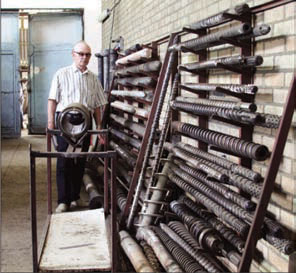
Dr. Som, after graduation from the welding faculty of the Kiev Polytechnic Institute you worked 18 years at the PWI, defended thesis for the candidate’s degree, became a senior staff scientist. It is interesting, what was the topic of your thesis?
The topic of my thesis, which I defended in 1985, directly related to the development of equipment, consumables and technology of PPS of parts of an intricate shape (screws of extruders).
It turns out that the basis of the future engineering successes was laid already by then. Over the recent years you have multiplied your knowledge and «know-how» in the field of technology and design of equipment for PPS of complex products. In your opinion, what are the prospects in expanding the area of PPS application, including for 3D technology?
Plasma-powder surfacing is a unique process and has huge prospects. Today,
throughout the world a great number of installations of various design and a wide range of
surfacing powders were created allowing solving a wide variety of problems of improving the service
life of parts. Here the rational use of these developments is important. The limiting factor in
extending the field of PPS has always been a lack of plasmatrons having different design.
Therefore, we paid this matter the most rapt attention in our work. Today we have created 20 models
of plasmatrons of different design and capacity for surfacing the outer and inner surfaces. The
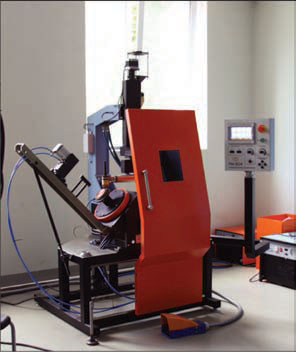
Regarding 3D plasma surfacing, it is necessary to fulfill two conditions: to have a high level of automation of equipment and to have plasmatrons with low losses of powder, because a weld pool should be very short. Today, this is absolutely feasible. Therefore, we are expecting a very rapid development of this direction. An effective object of 3D plasma surfacing can be, for example, screws of oil press equipment, where the turns can be grown completely of a wear-resistant alloy.
You were among the pioneers in the development of hybrid (laser + plasma) technology. What are the prospects of this technology and in what areas?
That’s right. In 1995 a joint work with the Fraunhofer Institute for Laser Tech- nology (Germany)
was carried out on this hybrid technology. On our side, a special plasmatron with a hollow cathode
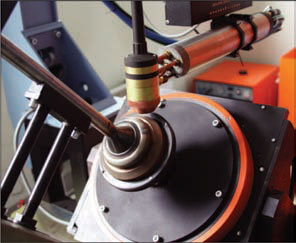
It is known that the products of your company, and among them manual, auto- matic and robotic installations for PPS, plasmatrons, feeders, oscillators, cool- ing units, as well as the services on repair and restoration of screw of extruders and other complex and critical products using PPS require integrated efforts in designing, engineering, mechanics, technology, materials science, and others. How did you manage to form a professional team for solving such complex problems?
The team was formed gradually through natural selection. The main thing in this work is to inspire the personnel to organize the work properly and to pay everybody a decent salary. It is necessary that people be proud and treasure their workplace. It is not easy in our time but we succeeded in something.
How are the portfolio of orders and such a broad geography of deliveries formed? How is the guaranty and service maintenance provided?
Today, we dispose such a powerful means of communication like the Internet, therefore, it is not difficult to attract potential customers to our products. It is important to respond timely to their inquiry and be able to manufacture and deliver the things shown on the website on time. We deliver the spare parts through the quick mail UPS, DHL or other carriers. A number of installations with a program control have a remote access via the Internet, so it is possible to adjust the working programs and settings without leaving the office. In some countries we have representative partners (USA, Poland, Lithuania, Republic of Korea), who also provide technical support to our customers. The geography of our partners is constantly expanding.
Dr. Som, you are a world-class expert, how do you estimate the directions of further development of plasma-powder surfacing?
This is, first of all, automation process and extension of rational applications. The equipment for PPS can be successfully applied for welding of critical structures using different working gases and shielding environment. It is not difficult to produce powders for this. This represents a very large field for activities.